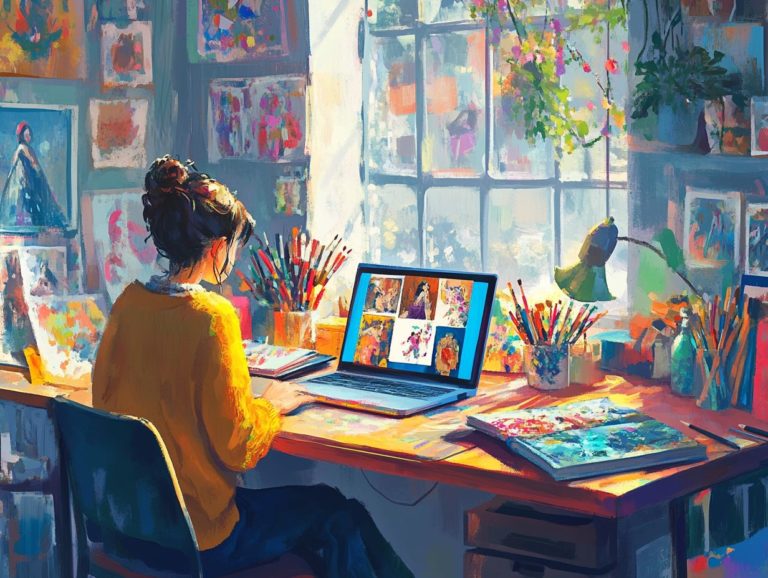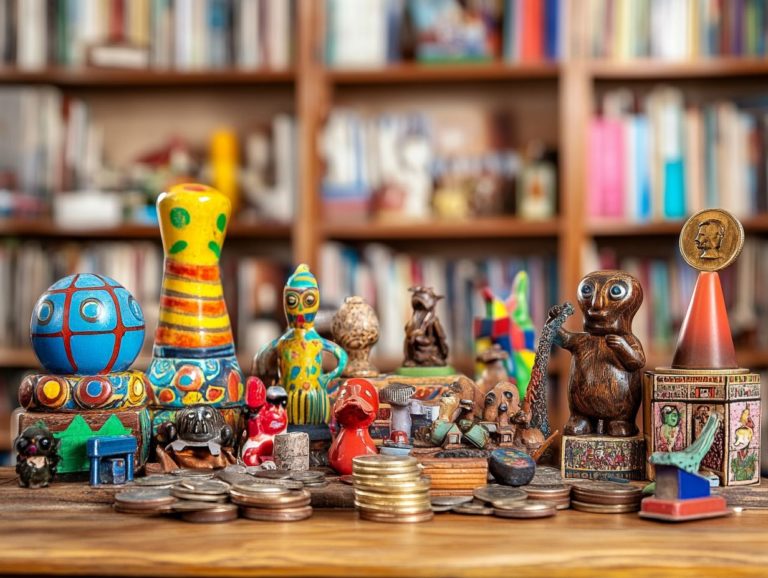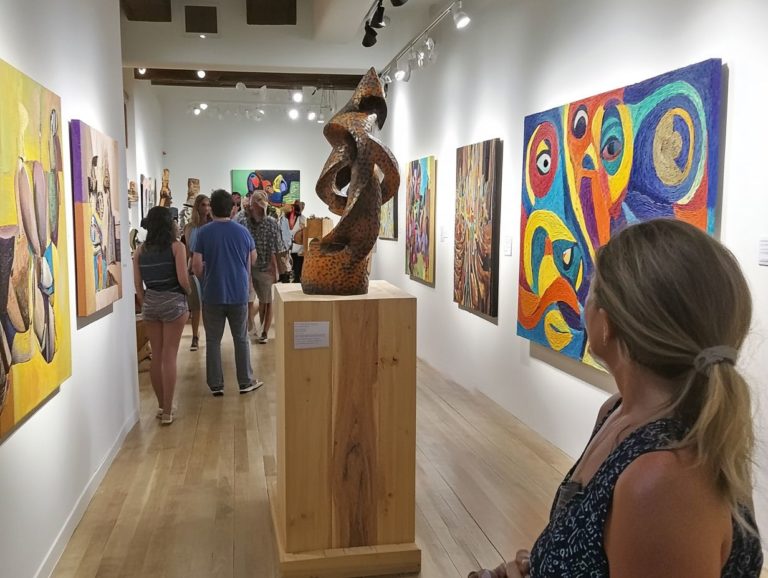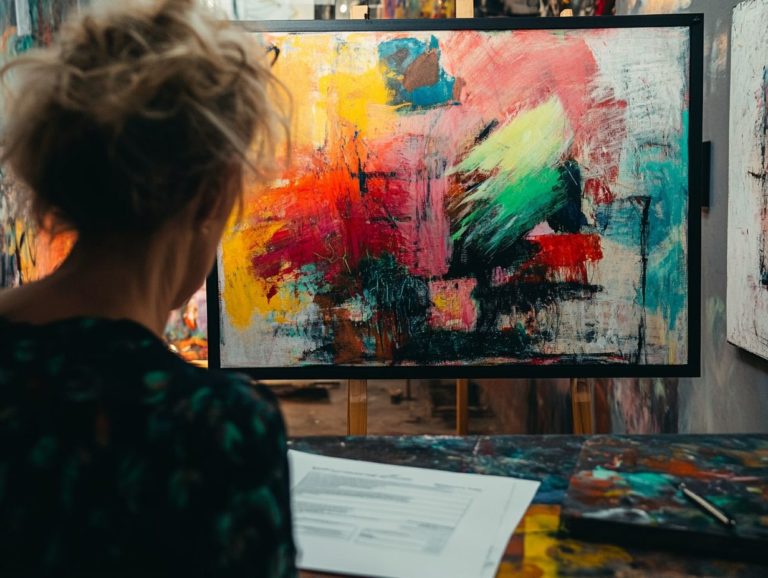Collecting Art vs. Collecting Antiques
Art and antiques each possess a distinctive allure, captivating collectors for various reasons.
Art often embodies personal expression and potential financial investment. Antiques offer historical significance and decorative charm.
This exploration highlights the key differences between the two, examining the motivations that fuel your collecting passion, essential considerations, and practical tips for curating your own collection.
Whether your heart leans toward the vibrancy of contemporary art or the nostalgia of earlier times, a world of discovery awaits you.
Contents
Key Takeaways:
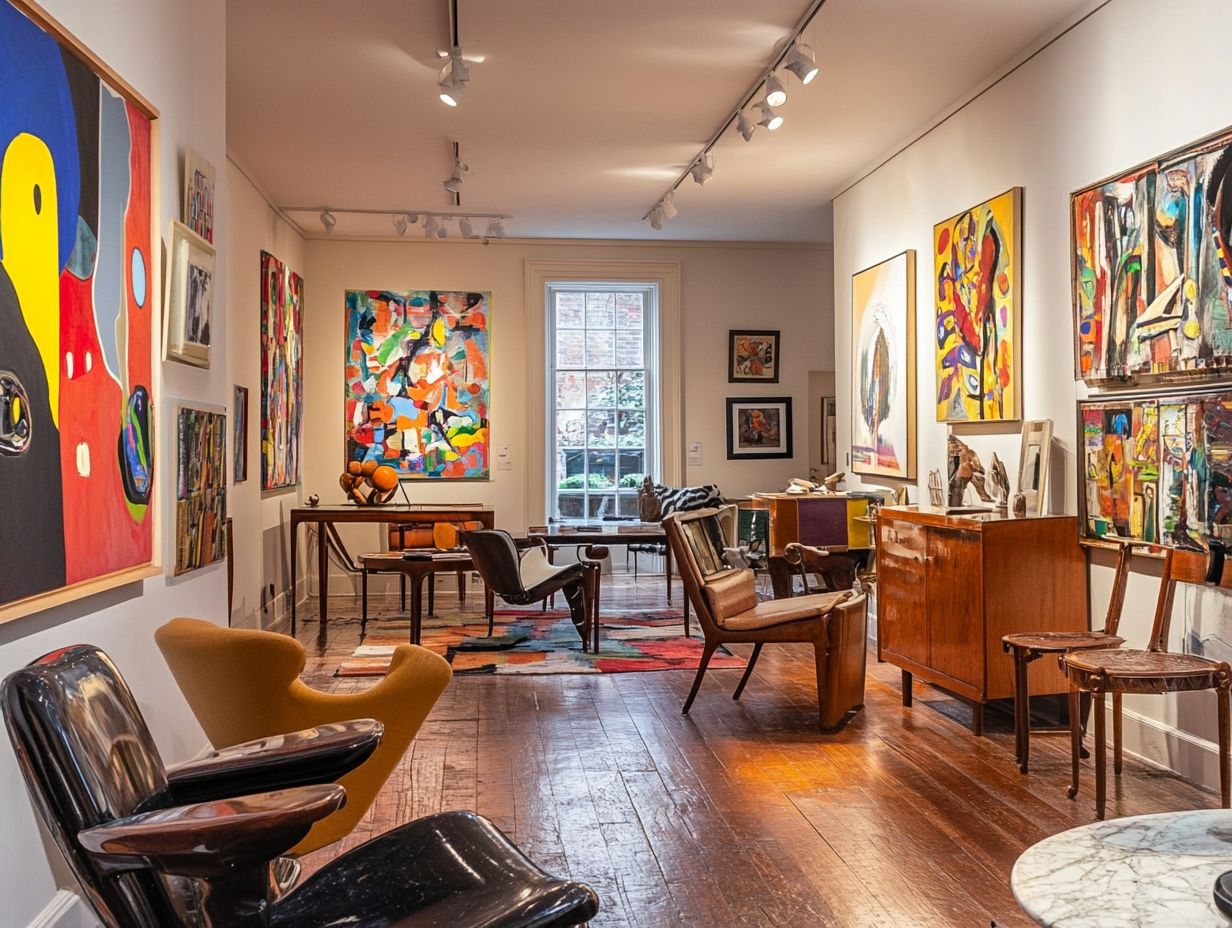
- Art is often seen as an investment, while antiques are valued for historical significance.
- When collecting art, focus on authenticity and provenance.
- For antiques, consider the item’s condition and rarity.
- Research and networking are key to building a successful art collection.
- Evaluating antiques is crucial for building a valuable collection.
Differences Between Art and Antiques
Art and antiques, both revered for their cultural and historical significance, present distinct definitions and implications for you as a collector.
Art usually pertains to modern or contemporary works that elicit aesthetic appreciation think vibrant paintings by celebrated artists like Matisse and Renoir.
In contrast, antiques represent items of historical value, often exceeding a century in age. They exhibit timeless craftsmanship and heritage.
While you may seek both for personal enjoyment and investment potential, grasping their differences is essential for navigating the ever-evolving landscape of fine art and antiques with confidence.
Reasons for Collecting Art
Collecting art is a pursuit driven by the joy of personal enjoyment and investment potential. It attracts those who admire the aesthetic beauty of modern masterpieces while recognizing their historical significance.
You may find immense satisfaction in curating a collection that embodies your taste and values, holding the promise of a return in a market known for appreciation over time.
Art pieces are more than mere decoration in your home; they become conversation starters, inviting deep exploration into the artist s techniques, styles, and the rich cultural contexts from which they emerged.
Personal Enjoyment and Investment Potential
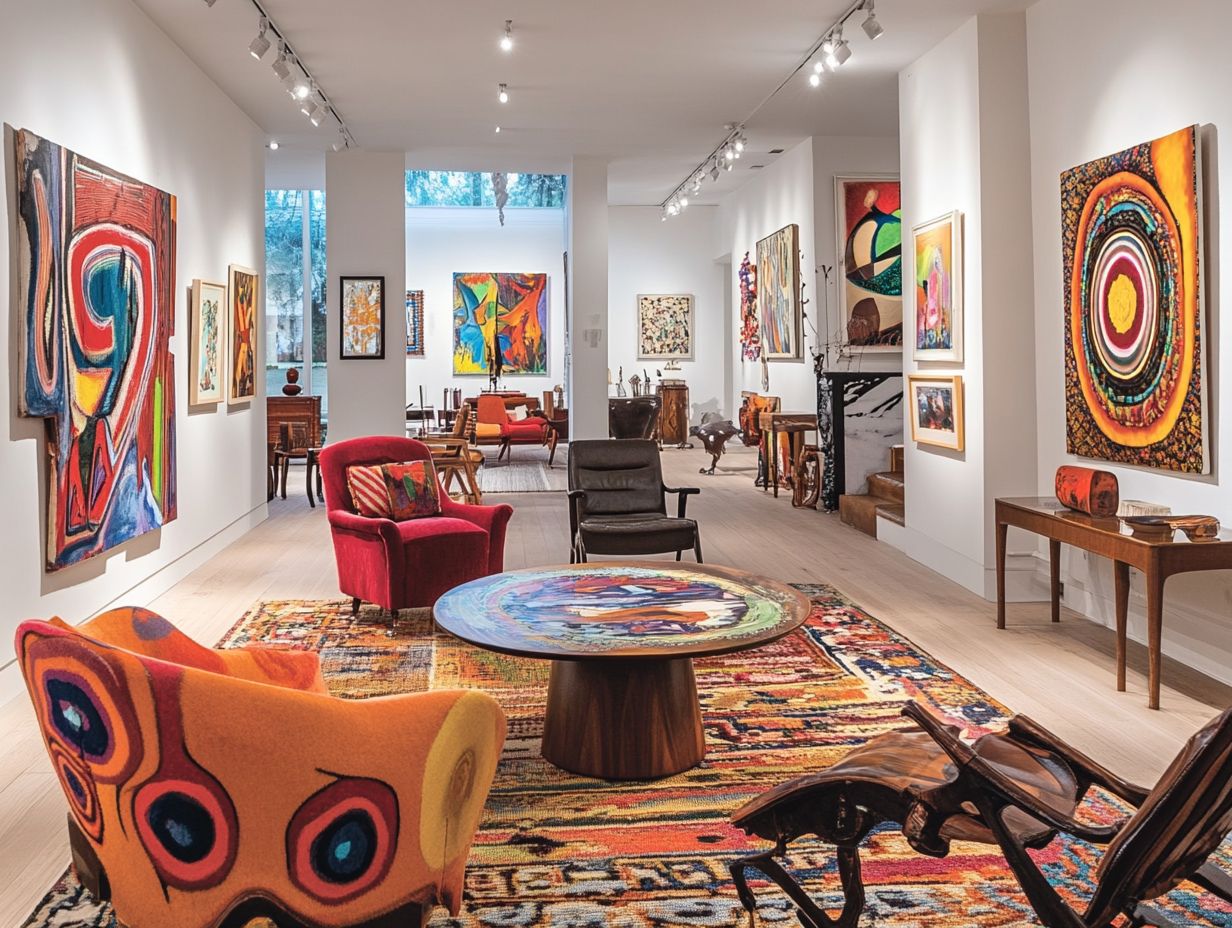
The allure of art collecting captivates you through a harmonious blend of personal enjoyment and investment potential. It appeals to both seasoned collectors and newcomers who wish to enhance their lives and portfolios.
For you, each piece is more than just an item of value; it carries a story and an emotional connection that resonates deeply. This emotional attachment enriches the joy of curating your collection, transforming it into a tapestry woven from memories and aesthetic appreciation.
While your personal affinity for art drives your passion, it’s essential not to overlook the financial implications. By understanding market trends, evaluating the quality of artworks, and analyzing historical data, you can make informed decisions that enhance your collection s future value, seamlessly marrying passion with prudent investment strategies.
Reasons for Collecting Antiques
Collecting antiques captivates enthusiasts who appreciate both historical significance and aesthetic appeal. It fosters a passion for preserving culture while exploring craftsmanship and investment potential.
The captivating narrative behind each piece often intertwines with its physical attributes, such as condition and provenance. This enables collectors to truly appreciate the heritage encapsulated within each item.
From the elegance of Victorian-era furniture to the charm of Edwardian ceramics, antiques serve not only as investments but as enriching decorative elements. They infuse living spaces with stories from the past.
Historical Significance and Decorative Value
The historical significance of antiques weaves intricate stories that elevate their decorative allure. They transform into cherished collectibles imbued with profound meaning and artistry.
Each piece serves as a tangible link to the past, reflecting cultural and social nuances of its time. The artisans who crafted these unique items infused them with techniques and materials that mirror the values and traditions of their respective eras.
This connection captivates you as a collector and invites a thoughtful examination of what constitutes heritage. It fosters a deeper appreciation for craftsmanship.
As you explore the narratives behind these antiques, you uncover tales of resilience, artistry, and the evolution of style. This enhances their value in your collection.
In a world increasingly dominated by mass production, these handcrafted treasures stand out as emblems of individuality and cultural significance. They offer you a unique glimpse into history that is both enriching and inspiring!
Factors to Consider for Collecting Art
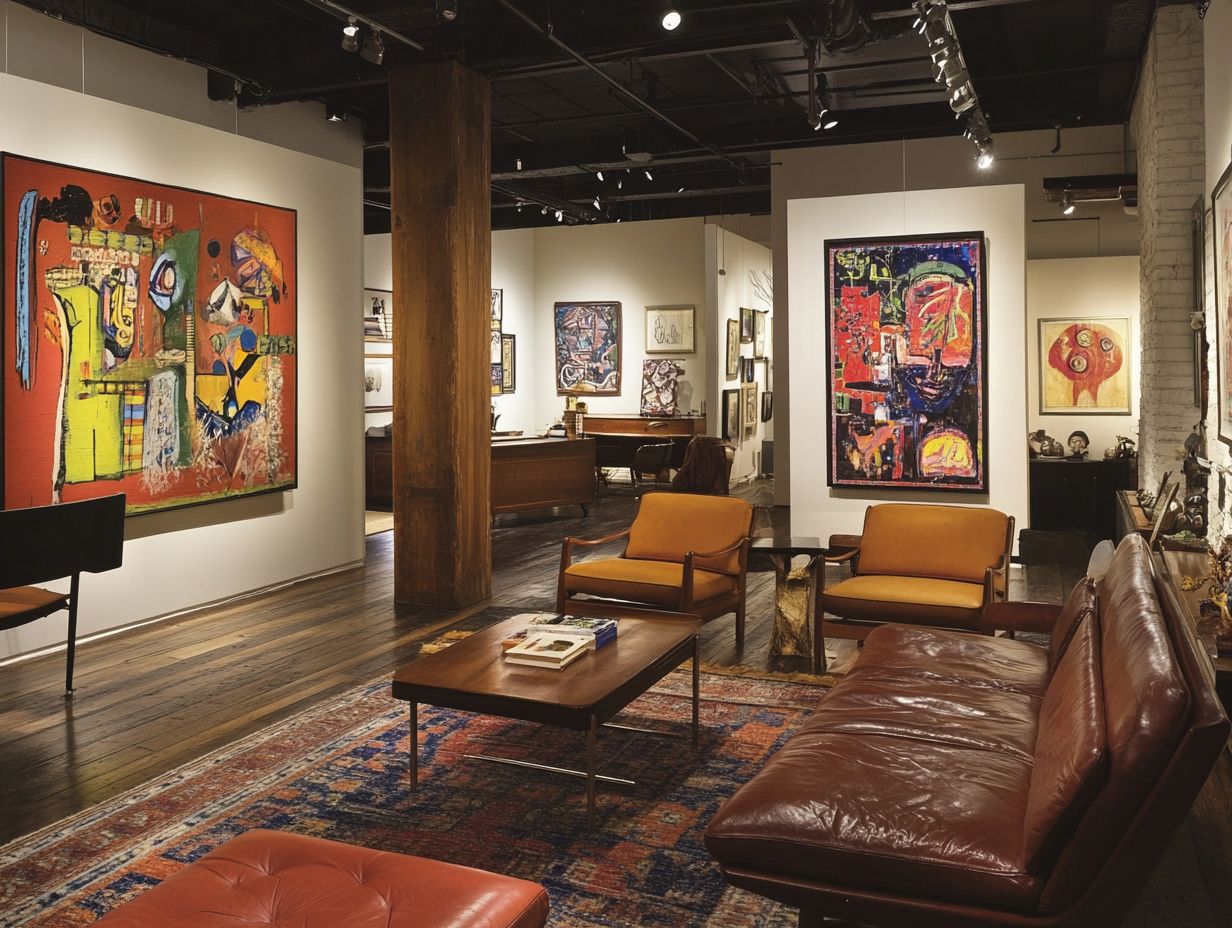
As you embark on your journey of collecting art, consider critical factors such as authenticity and provenance. These aspects are essential in assessing the value and integrity of each piece.
In a constantly shifting market, grasping these elements can significantly enhance your collecting experience and investment potential. Remember, quality whether in craftsmanship or artistic merit determines the desirability and lasting value of the artworks you choose.
Navigating the intricate dance between personal taste and financial acumen will serve you well!
Authenticity and Provenance
Authenticity and provenance are essential concepts in the art world. They significantly impact both the investment potential and quality of the pieces you collect.
In a market where imitations can easily pass for genuine artistry, having unique certificates and expert appraisals becomes crucial. These documents assure you that a piece truly reflects the vision of its creator.
Provenance, or the documented history of an artwork’s journey, enriches its narrative and deepens its emotional resonance, effectively enhancing its overall value.
For you as an investor or collector, a clear lineage safeguards your financial interests and enriches your experience. It fosters a multifaceted appreciation for high-quality artworks that go beyond mere aesthetics.
Factors to Consider for Collecting Antiques
When delving into the world of antiques, grasping the condition of each item and its rarity is essential for making astute investment choices. This elevates the quality of your collection.
A meticulous examination of craftsmanship, coupled with an understanding of provenance, can unveil the true value and narrative behind an antique. This enriches your appreciation and enhances the potential for future returns!
Navigating the intricate nuances of the antique market demands a discerning eye for detail and a profound appreciation for the heritage embodied in each unique piece.
Condition and Rarity
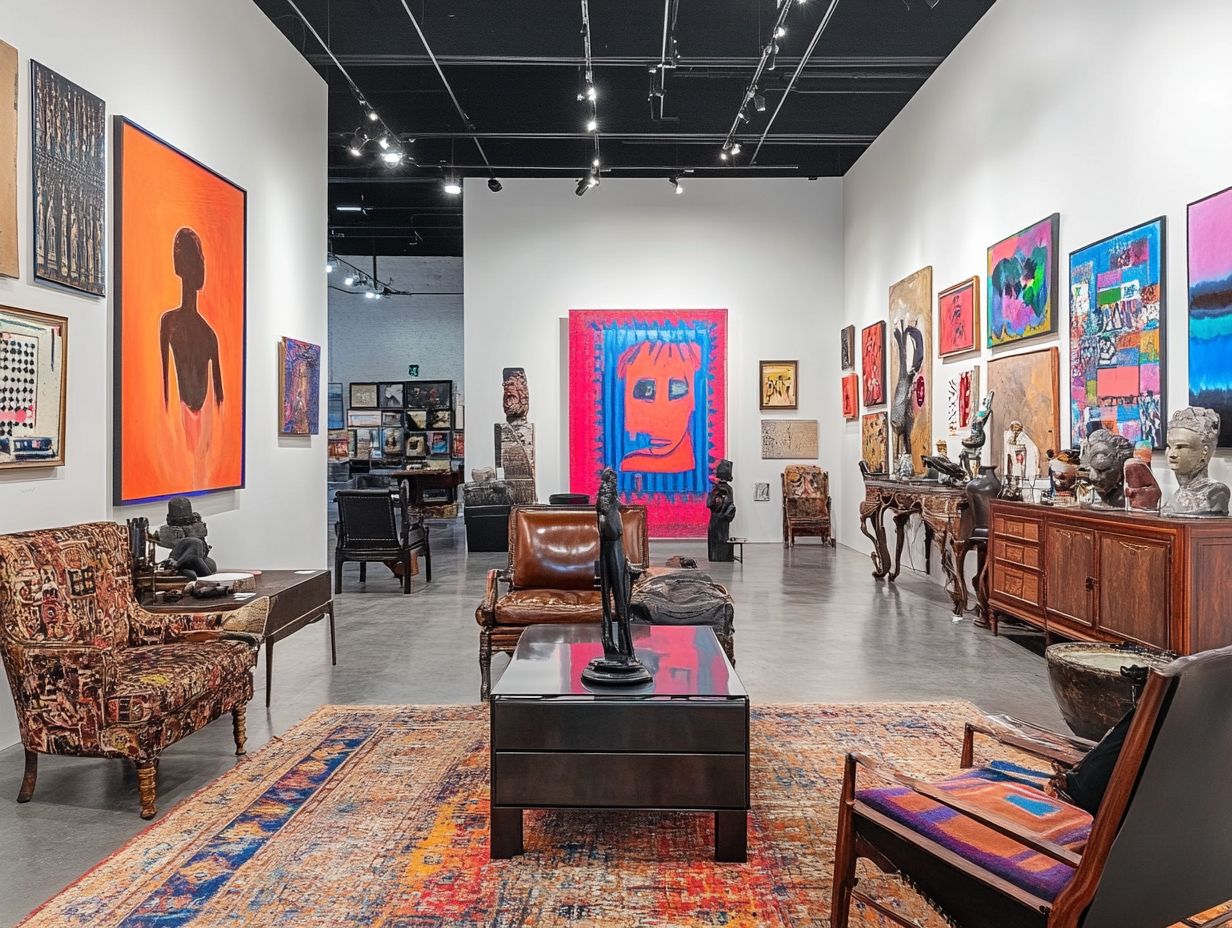
The condition and rarity of antiques are essential indicators of their overall quality and investment potential. These factors are crucial for you as a collector.
When examining an object s wear and tear, you likely gravitate toward pieces that show minimal damage. Such items indicate better longevity and a true respect for craftsmanship.
The rarity of an antique can significantly elevate its desirability. For instance, a limited-edition ceramic vase can command a higher price than its more common counterparts due to its scarcity in the market.
Conversely, while mass-produced furniture from a bygone era may be readily available, it often lacks the same allure. You find joy in the quest for those elusive treasures, like a rare Gustav Stickley Mission chair, where condition and rarity intertwine to weave a compelling narrative that drives demand!
Tips for Building an Art Collection
Start building your art collection today with careful research and smart networking!
Understanding the value of art within market trends and quality assessments offers a solid foundation for your collecting journey. By engaging with the art community through exhibitions and workshops, you gain deeper insights and forge connections that elevate your experience.
Research and Networking Strategies
Effective research and networking strategies are crucial for art collectors seeking to enhance their collections.
Actively seek out resources like industry reports and art publications these are magazines and websites that discuss art trends to gain valuable insights into emerging trends and influential artists.
Work with seasoned art dealers and curators; their perspectives can significantly shape your approach to collecting.
Attending exhibitions showcases the latest creativity and helps cultivate relationships within the art community. Participating in local art fairs or community events opens new doors for meaningful connections, enriching your overall experience.
Dive into the world of art today and start your unique collection journey!
Tips for Building an Antique Collection
Building an antique collection demands a careful eye. This allows you to identify and evaluate pieces that resonate with your taste and embody quality.
Approach this journey with a deep appreciation for craftsmanship, historical significance, and the subtle nuances of condition that influence value.
Work with knowledgeable antique dealers and attend estate sales to enrich your experience, providing access to unique treasures that enhance your collection.
Start exploring the fascinating world of antiques today and begin your collection adventure!
Identifying and Evaluating Antiques
Knowing how to identify and evaluate antiques is a key skill for collectors. It lets you spot quality craftsmanship and the condition that impacts each piece’s value.
Understanding the materials like wood, metal, or fabric is vital for your assessment. Each material has unique traits that can hint at age and authenticity.
Recognizing different styles and the historical context helps you grasp their significance and worth.
When assessing condition, carefully check for any repairs or wear. These details can greatly affect market value.
For those who want to invest wisely, researching the item’s history and market trends can guide you through the antique world.
Frequently Asked Questions
What is the difference between collecting art and collecting antiques? Collecting art is about acquiring contemporary pieces, while antiques are older items with historical value. For a deeper understanding, check out the basics of collectibles and art.
Which type of collecting requires more knowledge and expertise?
Both require knowledge, but antiques often need more specialized understanding due to their age and rarity.
What are the potential benefits of collecting art?
Art can be a profitable investment and allows you to express your taste and aesthetic through your collection.
Can collecting antiques be considered a form of art?
While it involves an appreciation for beauty and history, collecting antiques isn’t typically seen as art collecting, though many have artistic value.
Which type of collecting allows for more room for personal expression?
Art collecting offers more personal expression, as you choose pieces that resonate with your style. Antiques often have defined historical significance.
Is one type of collecting more expensive than the other?
Costs vary widely, but antiques often are pricier due to their age. However, some art pieces can also be very expensive.

